Here is a scenario - " I have been asked to create table arrangements for a party in a venue that I have never visited".
- How big are the tables that the designs are being used on?
- What is the size and height of the room?
Here is a scenario - " I have been asked to create table arrangements for a party in a venue that I have never visited".
Earlier this week, I was given the honour of taking part in the Q Corner Convention as part of the Design Panel discussion group alongside Tope Abulude, Cam Woody and Aleks and Nelly Hernández.
The first question we were asked as a group was "Which of the Principles and Elements of Design is the most important to a creation and why?"
This got me to thinking... how many balloon artists actually consider the basic principles and elements of design when making their decor? Is this something that many of us naturally do, or should it be considered more frequently?
So, let me put this to you in a different way - have you ever made a design or decor that does not look right, and while you know something is not quite right, you can't quite put your finger on it? Knowing the basics can prevent this from happening!
So what are the Principles and Elements of Design?Creating the 'perfect' design is not something that just happens, at least not for most of us anyway! There are a number of factors that can help to make a design 'perfect,' so let's take a look at what those factors are!
Principles of Design: The basic principles of design include words such as unity, proportion and scale, balance, rhythm and harmony.
By applying the principles to the elements of design, it will bring them together into one design. How you apply these principles determines how successful a design may be!
 |
| 'Spring is coming', by Colin Stewart of Stewarts Baskets and Balloons, Canada. |
If you were to ask any seasoned professional what they would do differently if they started their balloon business again, you would find that most of them would have taken up training sooner. Balloon artistry is a creative skill, and there is so much more to it than you many think... but maybe you have already started to find that out?
 |
| Training Instructor TY Wong of Colour Life, Hong Kong |
I know of a number of very successful balloon businesses who started their ballooning journeys in recent years offering only organic décor. They in their own words were 'self-taught'; however, as their businesses grew, so did their clients requests and it became evident that they needed to learn the true foundations of balloon artistry: Classic Balloon Decor.
 |
| Rainbow Arch and Decor by Sue Bowler |
 |
| Decor by Sue Bowler |
Creating the 'perfect' design is not something that just happens automatically, at least not for most of us anyway! There are a number of factors that make a 'perfect design', so let's take a look at what those factors are!
Elements of Design:
These are parts that make up the design, and you can either touch or see the elements of design. These include colour, line, shape and texture.
Principles of Design:
The basic principles of design include unity, scale and proportion, balance, rhythm and harmony.
Applying these principles to the elements of a design brings them together into one cohesive idea. How you apply these principles determines how successful a design may be!
So you may be wondering ,how can you learn about these and where can you find training courses, especially during the pandemic?
It is true to say that the pandemic has definitely thrown a spanner into the works when it comes to face-to-face training courses! However, finding good training in many countries has always been difficult even during normal times.
During the past few months, when many countries have been in lockdown, Qualatex has worked hard to bring training to the world-wide community in the form of webinars. To-date, there has been 10 webinars covering a wide variety of topics.
For anyone new to the balloon business, I would like to recommend:
"Cooking with Cam & Eve - Ingredients for Success Part 1 - Qualatex Latex" as well as "Cooking with Cam & Eve - Ingredients for Success Part 2 - Qualatex Microfoil and Bubble Balloons."
I can even offer you a coupon code that will give you $5.00 off each of these courses!
GoMrQ
 |
| #49164 18" "Birthday Pink & Gold Dots." |
 |
| Design by Sue Bowler CBA |
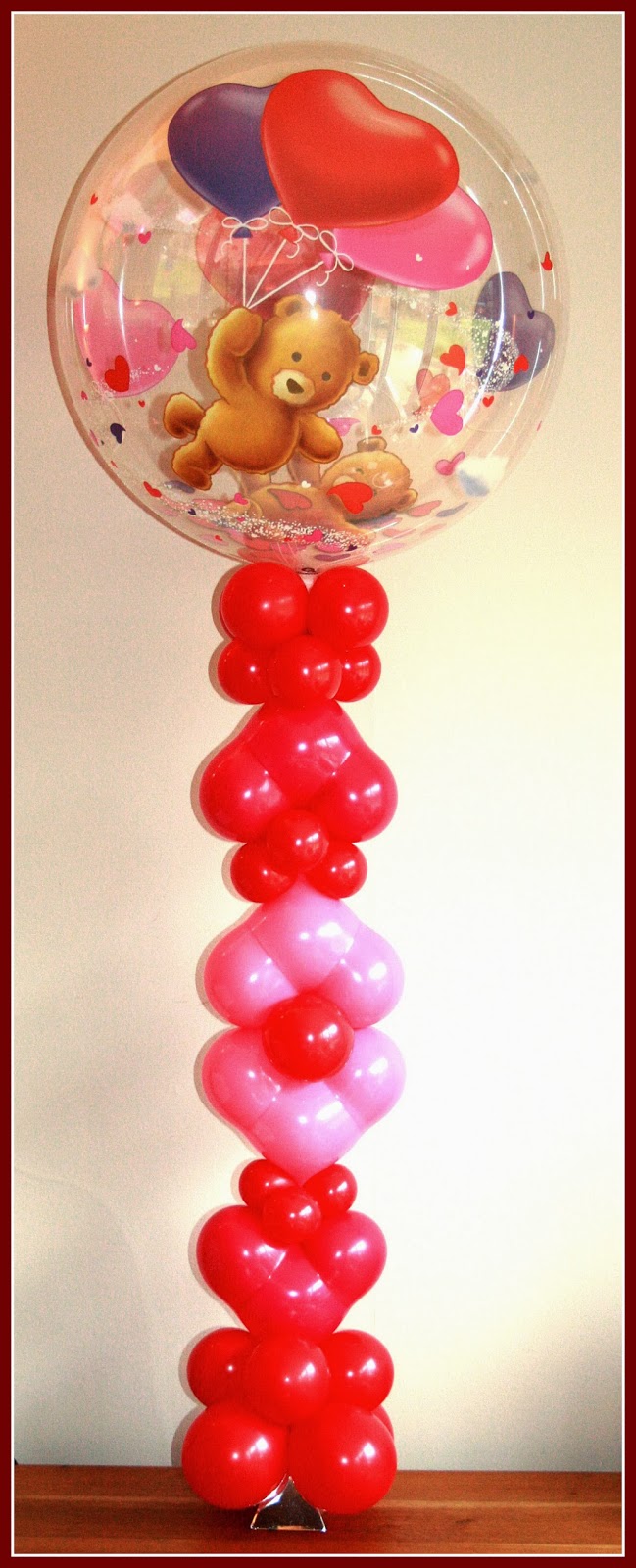 |
| 'Love Stack' - A great design for Valentines Created by Sue Bowler CBA |
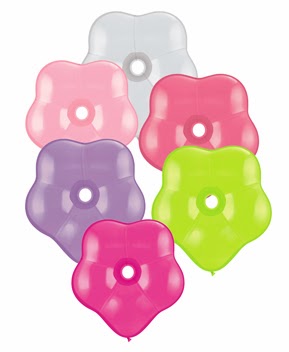 |
| Geo Blossom Flower Assortment |
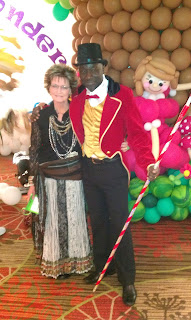 |
| Tope with Norma Roberts |

"The design process is usually the more interesting aspect for me...I approach room design (regardless of how big it is) like it's a big centrepiece design. Then I will treat each component like they are centrepieces in their own rights. It's always back to design basics for me. The elements and principles of design are my anchor, so using space, colour, line, form etc. and how these come together in unity, harmony, rhythm, proportion to each other to define the final whole of whatever project I work on. I think taking the time to understand these fundamentals of design, and the application is what makes the difference between a decorator and a designer in any art form.Once I had submitted my drawings, I decided I was going to enjoy the journey/process this time around".
"I overworked myself during the preparation and I couldn't enjoy the party 10 years ago, ( I didn't even bring my own costume to Chicago.) This time I paced myself better and I was more organised.
I focused on my strengths and I chose to delegate a lot more than I did 10 years ago.
I arrived in Dallas early to start work on the Monday. I took breaks when I needed, and I had a fantastic team around me and a good project manager."
| more Monkey's! |
| Tope's awesome team! |
"The costume party. The decor by Tope was fun and rich and it was great to see everyone parting and just having a good time"! - Malachi Robinson CBA
"The Gala and Circus decorating was amazing"! - Tracy Hawes CBA
"The WOW Factor of all the Decor, I have only seen in magazines and online - it was so much more impressive and the techniques were easier to comprehend". - Amanda Pierce CBA
"Circus theme party and Gala dinner where everyone dressed up for the occasion"! - Annabelle Claire Tan CBA
"Helping to build the decor for the special events". - Elaine Holmes CBA
"Blown away by the Circus theme, absolutely fantastic"! - John Brew CBA
 |
| The awesome Clown entrance arches!!! |
| The 'Big Top' and Clown Head... |
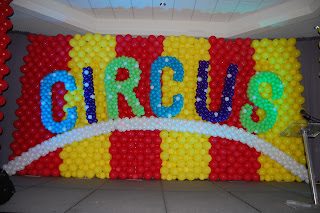 |
| 'Circus' Stage Wall |
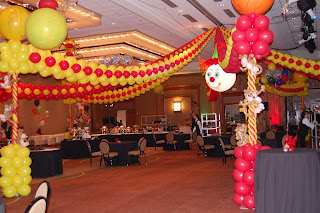 |
| Looking across the room |
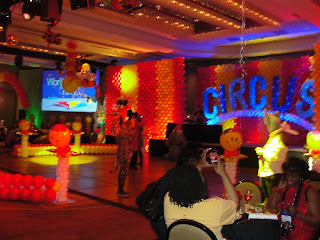 |
| Room decor with the stage 'Circus' wall and some very cool lighting! |
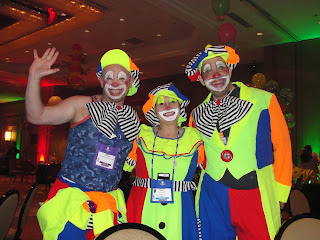 |
| Fantastic costumes! |
 |
| Guess who... this IS Ted & Betty Vlamis... looking great! |
 |
| Tope Abulude CBA, Balloon Inspirations, London, UK |
"I would like to thank contributing artists Cam Woody, Keith Stirman, Dom Cassidy, Connie Iden-Mounds, Dmitriy Tishenko, Andrey Osokin and David Debustos, the WBC staff and Volunteers (too long a list to name) and it was a pleasure to work with Nick Otis (and his team) and LaDonna Belcher".